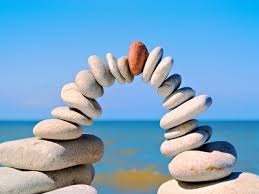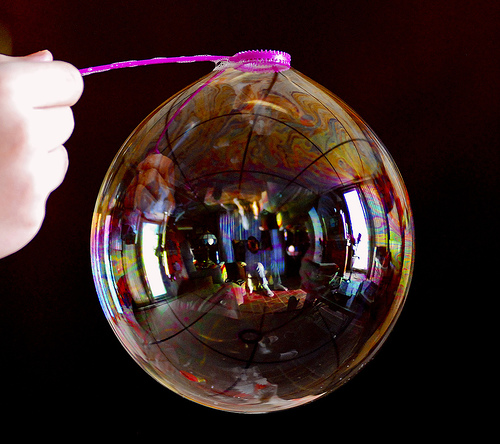Themes That Develop Organically in Your Novel
In the last two weeks we’ve begun discussing theme, the fourth key corner pillar of novel construction. I argued that without theme, plot is just a string of scenes, with little purpose. And although such a collection of scenes could be exciting to read, theme takes that plot to a much higher level, and ultimately gives you a higher quality story.
Themes are not just topics or subjects, which takes up back to the contrast between idea and concept. You might say your book is about abortion or capital punishment. That is just the topic (idea). Ask: What are you saying about that topic through your characters? Whether you are taking a strong stance or none at all (just want to explore the topic), in order to have a story with a plot, with characters who care about something, you will have theme.
Theme Is Intrinsically Connected to Concept, Protagonist, and Conflict
If your concept involves astronauts on a dangerous mission to Mars, for example, and you are writing action/adventure/suspense, what is your theme(s)? Well, that depends on your other pillars: the concept (premise with that kicker), the protagonist and his goal, the central conflict with high stakes.
Let’s look at the protagonist’s objective in the movie Red Planet (also the collective goal of all the characters)—which is to get to Mars to see if the experiment to grow algae is a success. That may or may not present a viable or engaging theme. With that idea, you might have a purposeless string of scenes as they get to the planet (or not) and face danger or obstacles.
But here’s the concept and kicker for that movie: It’s 2055. Earth can no longer feed all its inhabitants, so this is a desperate measure to save humanity (great concept and kicker, danger/conflict with high stakes, clear goal). By setting up this story with three strong corner pillars, it makes the way for great themes. How so?
Interestingly, there are a lot of themes going on in Red Planet, which makes it a rich and fascinating story in addition to the basic action/adventure going on as one thing after another goes wrong and the characters die one by one. The plot is exciting and well structured, which is key.
But as I mentioned in last week’s post, plot means little if the four main structural components (corner pillars) aren’t build to perfection. This movie would just be a string of scenes, albeit interesting, just because of the plot. Their emergency landing is met with disaster, provision losses and equipment malfunctions add more danger and devastation, and a high-tech robot goes Terminator on them. However, this movie is much more compelling because of its themes.
What the screenwriter did to make the way for themes galore in this story was to create a cast of characters from different scientific disciplines, each passionate about something that clashes with other characters’ passions. When you have characters all conflicting because of their worldview, beliefs, morals, and priorities, you have the ingredients for rich themes in your story (read more about this in this post here).
Theme Emerges in Conflict
In Red Planet, the scientists must struggle to overcome the differences in their personalities, backgrounds, and ideologies for the overall good of the mission. Note that they share a common goal, but each has different passions and beliefs. When their equipment suffers life-threatening damage and the crew must depend on one another for survival on the hostile surface of Mars, their doubts, fears, and questions about God, man’s destiny, and the nature of the universe become defining elements in their fates. In this alien environment they must come face-to-face with their humanity.
Plot shows the story; theme is the story. Plot is the vehicle for theme.
Note, though, that these themes don’t crop up in the movie through a mundane string of philosophic discussions. The wonderful moments in which these topics and themes come out take place while the action is ongoing and tense. Sure, great stories (movies or books) will have those reflective or introspective moments in which the characters discuss, think, and/or question their views and beliefs. This is crucial because character arc is all about change and growth. But those should be brief moments of reflection in between the active scenes.
What makes your characters change is intrinsically tied in with your book’s theme. If you don’t know what your themes are, think about the key moments in your book that force your character to change his view on something (which will lead to action). I would go so far as to say this: If you think about your protagonist’s key moment of realization that occurs right before or at the climax of your novel—that’s where your theme can be found. If you don’t have that moment, you don’t really have a strong character arc. And that’s a problem.
Pitfalls of Working Themes into Your Story
Watch out for pitfalls when trying to develop themes in a story. Writers sometimes try to cram theme in their stories by preaching, lecturing, and long explanations—either via the characters or as author intrusion. You’ll notice in the best movies and novels that have strong themes that those discussions centering directly on theme will feel organic to what is happening in the plot and to the characters. Theme should manifest as a result of the events unfolding in your story that force characters to stand up, oppose, complain, dare, risk, turn away, stop, prevent, speak out, shut up—you get the point. Readers get the theme by watching you show (not tell) the story.
Although it’s possible theme may naturally or accidently come through as a writer creates scenes and plays out her story, approaching a novel with the intention to establish, develop, and capitalize on theme will make for a much better, focused novel.
Since I’ve presented a lot of thought about theme in this post, I’ll stop here. Next week we’ll continue. However, if you would like to get a better idea of what themes can come out in a story, I posted a number of examples in the course Writing the Heart of Your Story, which ran all year on this blog in 2012 (and will be out in book form this summer). These are movie examples (which I prefer using, since most of us have seen many of the same movies but few have read the same novels), and I chose some that, on the surface, might not appear to have big themes. But they do. Click on these to read them: Babe, Nell, City Slickers, Strictly Ballroom, and K-Pax.
Have any thoughts about theme so far? Have you discovered a theme in your story you didn’t know was there? Share in the comments.
Inspection Checklists:
Inspection Checklist 1-concept with a kicker
Inspection Checklist 2-protagonist with a goal
Inspection Checklist 3-conflict with high stakes
Photo Credit: Pink Sherbet Photography via Compfightcc












excellent post c.s. i haven’t seen the red planet but you did a great job of laying it out.
It’s worth seeing just to watch how the themes are set up and then used in conflict and threaded through the story. Plus, it’s a lot of fun and excitement. Much different from Gravity, for example, which some feel have “deep” themes or meaning to it. I personally found the story entirely lacking because it pretty much leaves the viewer to interpret what he or she will, instead of being clear about the themes or motif of gravity. It was more an artistic piece to me. But I prefer meatier stories when it comes to theme and purpose. Thanks for your comment.
A very well thought-out post, really writer-type stuff. I blogged about this just last week, but my thinking is simpler overall while inserting a strata between plot and theme, the one I think I do pretty well- character. Theme on the other hand, not so much!
http://independentbookworm.com/2014/05/07/getting-to-the-third-level-of-writing/